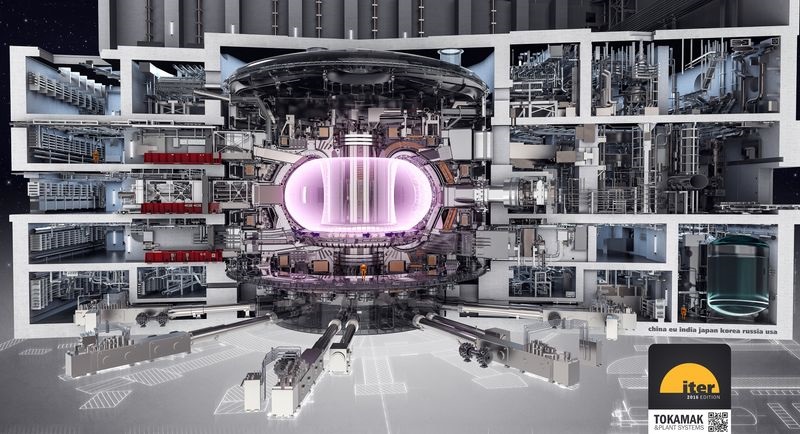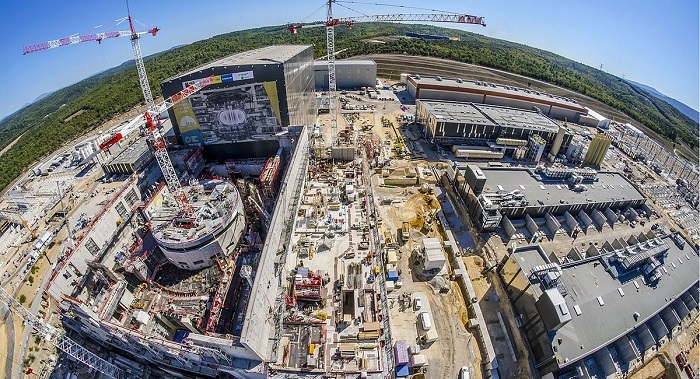PABLO GARCÍA-RUBIO | Tungsteno
We are now entering the five decisive years leading up to the powering on of the most ambitious experiment in the history of science: ITER, the world's largest reactor designed to demonstrate nuclear fusion. With the initial construction phase completed in Cadarache (France), the assembly of this colossal engineering infrastructure, in which all the world's major powers are collaborating, has begun. The magnitude of this challenge is rivalled only by that of the three scientific megaprojects of the 20th century: the development of atomic energy in the 1940s (Manhattan Project), man's landing on the moon in the 1960s (Apollo Program) and the launch of the International Space Station in the 1990s.
While the 21st century began with the Human Genome Project and the Large Hadron Collider, the two most important international scientific cooperation projects to date, it is likely that neither of these will have as much impact on history as ITER. This experiment, due to start in 2025, is intended to provide the definitive solution that will eliminate our dependence on oil after 2050. Beyond the plan to reduce emissions by 2030 and the energy transitions planned for the next two decades, humanity needs a medium- to long-term plan to halt climate change.
A large nuclear reactor to save the planet
ITER (International Thermonuclear Experimental Reactor) is an international project aimed at creating the world's largest nuclear fusion reactor and proving that this method is capable of producing energy in a viable way. This nuclear reactor, which is currently under construction in the south of France, is a pioneer in attempting to reproduce nuclear fusion in a stable and long-term way.
In a way, it is trying to recreate on Earth and on a small scale the same process that powers stars in the universe, like our Sun. It is a natural process involving enormous amounts of energy, but it has not yet been possible to reproduce it artificially. If this could be achieved, it would be a clean, safe, cheap and virtually inexhaustible source of energy.
The reactor consists of a large 23,000-tonne doughnut-shaped Tokamak-type magnetic confinement chamber. This design was already conceptualised by Soviet scientists in the 1950s and an international committee to oversee its development was formed in 1986. The plan is that, when testing is completed, ITER could lead to a fusion power plant capable of producing electricity in the same way as existing thermal power plants, which burn fossil fuels or split radioactive elements to generate heat and produce steam, which is used to spin a turbine to produce electricity.

The reactor consists of a large magnetic confinement chamber weighing 23,000 tonnes. Credit: ITER.
The energy produced in a fusion power plant would also be highly efficient: with just one gram of fuel, the energy equivalent to burning 8 tonnes of petroleum could be obtained. Furthermore, it is estimated that fusion could generate three to four times more energy than the fission process—the only process currently used in nuclear power plants.
The great energy hope
Fusion is a nuclear reaction that consists of merging two light isotopes of hydrogen (hydrogen atoms with different numbers of neutrons). When these particles collide, they achieve a plasma state and large amounts of heat and energy are released. It is precisely this high temperature—around 150 million degrees—and the instability of the plasma that make fusion very difficult to control and maintain.
To date, all mass-produced nuclear energy in the world is generated by the fission process. That method follows the reverse process: it splits the nucleus of a heavy element, mainly uranium, into fragments in order to release energy. The main problem with the fission process is that the waste generated emits highly unstable and radioactive particles and must be buried in so-called "nuclear graveyards." In addition, a malfunction or leak in a nuclear power plant using fission can lead to human and natural disasters, such as Chernobyl or Fukushima.
In contrast, fusion only produces helium as a waste product, an inert gas that does not interact with the environment or humans. A fusion power plant could not cause any disaster because, if any of the protocols failed, the plasma would cool down and the process would be paused without causing any major disruption.

Fusion is a nuclear process that involves merging two light isotopes of hydrogen to release energy. Credit: IAEA.
When will it become a reality?
Calculating the timeline of the project is the most complicated part, mainly because it is an international initiative of unparalleled magnitude, whose members are China, the USA, Japan, South Korea, India, Russia and the European Union. Initially, the intention was to achieve the first plasma by 2020, but that timetable was scrapped and the target reset for December 2025. This year, the COVID-19 pandemic has delayed the assembly of the machine and the arrival of some of the components, so the organisation has already warned that there could be further delays.
However, these minor delays are not very significant, especially if one takes into account that it took 20 years from the time that Presidents Ronald Reagan (USA) and Mikhail Gorbachev (USSR) laid the foundations for the project until construction actually began. And we will likely still have to wait another two decades for the first stable plasma.
What seems clear is that the development of nuclear fusion as an energy alternative is not only a project for the future, but will probably be the great energy solution of the next generation. If the predictions are correct, it will be viable in the second half of this century. The project's CEO, Bernard Bigot, believes that the current timetable, although stretching into the distant future, is realistic. After all, says Bigot, "once oil was first extracted from the ground, it took 150 years for it to become a global industry."
· — —
Tungsteno is a journalism laboratory to scan the essence of innovation. Devised by Materia Publicaciones Científicas for Sacyr’s blog.
